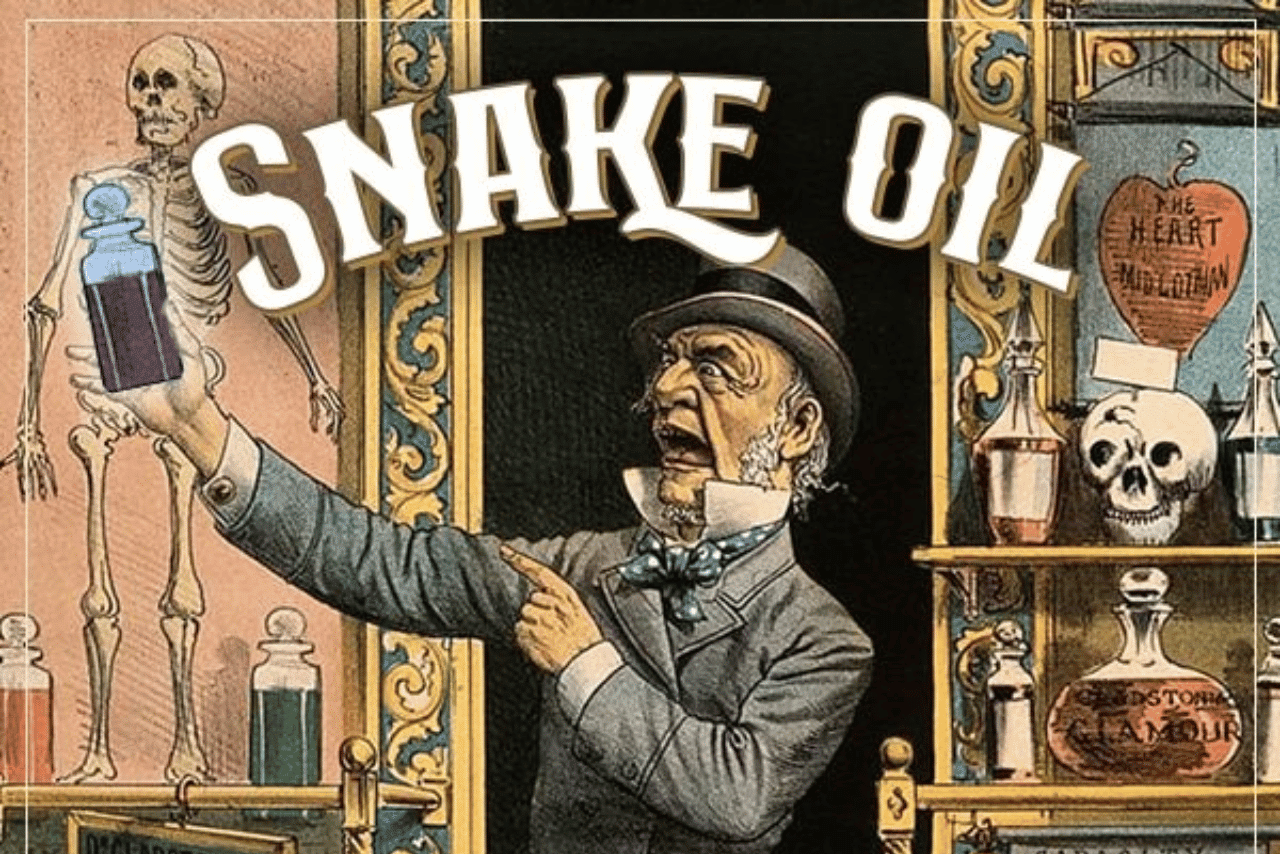Introduction
As organizations prepare for 2025, HR leaders are grappling with various people-related challenges that will define the coming year. An early analysis of qualitative responses from the ongoing HR Leadership Outlook 2025 survey – answers explicitly to “What’s the biggest people challenge your team is struggling with right now?” – reveals several recurring themes. Issues such as change fatigue, AI readiness, a lack of strategic influence, resourcing constraints, and communication breakdowns are top of mind for CHROs and their teams.
This article provides a structured preview of these emerging themes. We begin by analyzing each challenge and its context, incorporating expert insights and recent research. We then discuss implications for HR practice, framing these issues as opportunities for HR to demonstrate leadership. This early look is meant to build anticipation for the upcoming full report and to invite additional input from HR leaders. By examining these trends now, HR executives can begin to formulate proactive strategies to address them, and we encourage readers to share their insights to enrich the final report.
Change Fatigue: Managing Relentless Change
One of the most frequently mentioned challenges is change fatigue – the exhaustion and reduced morale that employees feel amid continuous change. In many organizations, the volume and pace of change have become “overwhelming for employees,” with transformations now “stacked” and continuous, harming well-being and eroding trust. After several years of pandemic-driven shifts, reorganizations, and new initiatives, HR teams find that workers (and HR staff) are weary of constant flux. Gartner’s recent research confirms that mitigating change fatigue is a top priority for over half of HR leaders. 77% of HR leaders report employee fatigue from excessive change, which has tangible impacts – change-fatigued employees show up to a 42% decrease in intent to stay with the organization and significantly lower performance. These stark outcomes underscore why managing change fatigue is critical.
Leading HR thinkers emphasize building change resilience. Gartner advises organizations to “plan for change fatigue risks” and bake fatigue management into transformation plans. This might include spacing out initiatives, better change communication (addressed later), and supporting employee well-being during transitions. Deloitte’s 2024 Human Capital Trends research likewise flags change fatigue as a risk factor that can undermine organizational culture and performance if not addressed. The early survey findings suggest that HR teams are seeking ways to combat burnout from change and maintain engagement – essentially, how to keep employees (and HR) motivated and healthy through never-ending transformation. This will likely be a significant focus of the whole HR Outlook 2025 report, with strategies to turn “transformation overload” into sustainable change momentum.
AI Readiness: Preparing for an AI-Powered Future
Another prominent theme is AI readiness – the challenge of preparing the organization and workforce for rapid advances in artificial intelligence. Many HR leaders are excited about AI’s potential in HR (from automating routine tasks to enhancing talent analytics), yet they also voice concerns about their teams’ preparedness to implement these new technologies. This tension is reflected in industry research. Gartner notes that while there’s intense “hype around artificial intelligence (AI) and generative AI,” most HR functions are currently unprepared to implement AI-related initiatives effectively. HR leaders must consider which new tools to adopt and questions of governance, ethics, and workforce readiness for AI-driven processes. In our survey responses, terms like “AI,” “automation,” and “digital skills” recur frequently, indicating both interest and anxiety around this topic.
Expert insights reinforce the importance of AI readiness. HR industry analyst Josh Bersin recently identified the impact of AI on the workforce as one of the five significant challenges for 2025, alongside the need for HR’s own transformation. Organizations are moving quickly – a recent HR executive survey found 51% of employers are already utilizing generative AI in some capacity – yet adoption is uneven. Bersin stresses that modern AI tools “are business imperatives that we will have to adopt,” not just shiny new toys. The early survey data suggests some HR teams feel behind the curve (“struggling with AI implementation” is a common sentiment), while others are forging ahead but worry about change management and skills. The implication is clear: HR leaders must drive AI readiness by upskilling their teams, investing in technology judiciously, and crafting strategies to integrate AI to augment (rather than alienate) employees. This includes educating the workforce, updating policies, and ensuring the ethical use of AI – all topics that the final Outlook report will explore in depth.
HR’s Strategic Influence: Earning a Seat at the Table
Many respondents expressed frustration that HR is still fighting for strategic influence within their organizations. Phrases like “lack of a voice in decision-making” or “not viewed as strategic” highlight an age-old challenge for HR teams: how to be seen not just as administrators or support functions, but as core strategic partners driving business success. HR thought leader Dave Ulrich has long championed that HR must operate with an “outside-in” perspective – aligning people strategies to deliver value to key business stakeholders and customers – to earn its seat at the table. The ability to act as a true strategic partner to the business is considered “the ultimate indication of an HR team’s success.” In practice, this means HR initiatives should directly support business goals and be measured in terms of business outcomes, not just HR metrics.
Current research validates the importance of HR’s strategic role. A recent McLean & Company study (echoing Ulrich’s principles) found that a well-aligned HR strategy significantly improves overall corporate performance and agility in the face of challenges. Yet many HR leaders admit they struggle to break out of the transactional mindset. Our early survey findings indicate that some HR teams feel sidelined from significant strategic conversations – for example, being brought in late to plan business transformations or not having input into organizational direction. Overcoming this requires building credibility and demonstrating impact. Experts suggest several approaches: using data and analytics to speak the language of the C-suite, focusing on initiatives that drive measurable value, and strengthening relationships with other executives by addressing their most pressing needs. In essence, HR must consistently prove its strategic value. The positive news is that the environment in 2025 may offer HR a chance to shine: Gartner analysts note that HR functions now have the opportunity to influence areas where they’ve long claimed they could make an impact. The full report will likely highlight success stories and tactics for HR leaders to amplify their strategic influence in their organization.
Resourcing Challenges: Doing More with Less
It’s notable that HR leaders are also concerned about resourcing – having the right people, skills, and budget to meet growing demands. Many HR departments are stretched thin after navigating a pandemic, social upheavals, and rapid business changes. “Too many priorities and not enough staff” or “limited budget for initiatives” are common refrains in the survey responses. This aligns with broader trends: according to Gartner data, 60% of HR leaders anticipate flat or decreased HR budgets going into 2024. In other words, most HR teams will not see increased resources even as they take on new challenges like AI integration, employee well-being programs, and diversity and inclusion efforts. Similarly, SHRM’s latest workplace report found that over half of HR executives cite budget constraints as a barrier to meeting their goals, and only about two-thirds of organizations plan any HR staffing growth in the near term. The squeeze is real.
The consequence is that HR teams feel pressure to do more with less. It’s not just budgets – talent shortages in key areas (such as data analytics or strategic HRBP roles) exacerbate the issue. There is also an element of HR leader burnout: after years of crisis management, even CHROs run on fumes. (Recent media reports have noted that many HR leaders are burned out and are even considering exiting due to the nonstop pressures of the past few years.) While our survey respondents didn’t name themselves, the underlying stress is evident. The implication for 2025 is that HR functions must ruthlessly prioritize and innovate to deliver value efficiently. Experts recommend strategies like leveraging technology and automation to handle administrative tasks (freeing HR staff for higher-value work), upskilling existing team members instead of constantly hiring new ones, and building the business case for critical investments by linking them to business outcomes. As Josh Bersin has observed, this period is an “urgent call for HR transformation from the inside out” – meaning HR must redesign its own workflows and capabilities to meet new demands. The forthcoming report will delve into how HR leaders can balance a growing mandate with finite resources, ensuring their teams remain effective and resilient.
Communication and Culture: Bridging Hybrid Gaps
The final key theme emerging from the survey data involves communication issues and the related challenge of maintaining a strong organizational culture, especially in hybrid or distributed work environments. HR leaders noted difficulties such as “misalignment between teams,” “poor communication from leadership,” or “employees feeling disconnected.” These concerns speak to the heart of employee experience. Gartner’s research finds that with more hybrid work and fewer in-person interactions, many organizations have seen their traditional culture “rocked.” In fact, 41% of HR leaders say employees’ connection to the company culture is compromised by hybrid work. When people aren’t regularly together in the same space, it takes extra effort to communicate goals, changes, and values in a way that truly reaches everyone. If that effort isn’t successful, silos and misunderstandings grow.
Effective communication is the linchpin for tackling all the earlier challenges – explaining the “why” behind constant changes (to mitigate change fatigue), educating the workforce about AI initiatives, or demonstrating HR’s strategic contributions to the C-suite. Lack of communication can also fuel low trust. (Notably, only about half of employees trust their organizations in the current climate, a statistic tied partly to how change and decisions are communicated.) Experts like the team at Deloitte have emphasized that leadership behaviors and clear, frequent communication have a significant impact on employee well-being and can counteract burnout and uncertainty. For HR, the mission is twofold: improve internal team communication (within the HR function and with business leaders) and strengthen organizational communication channels to keep employees informed and engaged. Some survey respondents mentioned implementing new forums for employee voice or increasing leadership town halls as ways they’re trying to close the communication gap. In practice, solutions may include investing in communication tools, training managers to be better communicators, and intentionally crafting cultural rituals that work even when teams are remote. The early evidence suggests that companies that succeed in connecting their people – aligning everyone to a common purpose and feedback loop – will have a distinct advantage in 2025.
Expert Insights and Implications for Practice
These emerging themes – change fatigue, AI readiness, strategic influence, resourcing, and communication – are deeply interconnected. They form a landscape in which HR leaders must navigate constant change while adopting new technology, all with limited resources, and still engaging the workforce and driving strategy. It’s a tall order, but HR thought leaders offer guidance that can help turn these challenges into opportunities:
- Build Change Resilience: HR should develop ongoing change management capabilities rather than treating change as an ad-hoc issue. This means training managers to lead change (addressing the finding that many managers feel ill-equipped to do so) and incorporating “fatigue checks” into project plans. As one Gartner insight suggests, plan for the human side of transformation just as rigorously as the technical side. Companies that pace their initiatives and support employees through transitions will sustain higher morale and performance than those that push relentlessly without regard for change overload.
- Embrace AI with Purpose: To improve AI readiness, HR can start with small, tangible projects that demonstrate value, while also setting up governance for the ethical use of AI. For example, experiment with an AI tool in recruiting or HR service delivery, but simultaneously form an AI ethics committee or guidelines. According to Gartner, having an evaluation framework for HR technology – asking the right questions about risks, skills, and readiness – is essential before scaling AI solutions. Upskilling the HR team in data literacy and partnering with IT will also enhance confidence. The goal is to turn AI into an ally that frees HR to be more strategic, rather than a source of fear or confusion.
- Elevate HR’s Strategic Role: Dave Ulrich’s perspective and recent research point to a clear mandate: HR must link its work to business outcomes to increase its influence. In practical terms, this could involve HR leaders participating in business planning sessions, using data to show how HR initiatives (like improved retention or workforce development) drive revenue or customer satisfaction, and reframing HR projects to solve business problems. Some organizations create roles like “HR Strategy Director” or embedding HR staff within business units – moves that signal HR is a co-owner of business results. As one article put it, HR professionals should see themselves “not just as HR leaders, but as business leaders who specialize in HR.” This mindset shift is empowering and positions HR as an indispensable partner.
- Innovate Around Constraints: HR leaders can leverage creativity and prioritization when facing tight budgets and lean teams. Focus on a few high-impact initiatives rather than many small ones. Leverage cross-functional teams or task forces to share the workload on people projects. Invest in HR tech that automates routine work (e.g., AI-driven employee query chatbots or self-service platforms) to free capacity. Also, don’t hesitate to make the case for critical resources by presenting data – for instance, demonstrating how investing in an employee well-being program could reduce turnover costs. Even though 60% expect flat or lower budgets, leading companies will treat HR not as a cost center but as a value creator worth investing in. HR’s challenge is clearly articulating that value proposition to the CEO and CFO.
- Strengthen Communication and Culture: Finally, HR should champion a culture of open communication. Ensure that employees hear from leadership regularly, not just about successes but about upcoming challenges and changes. Encourage managers to have more frequent check-ins and solicit feedback, especially in hybrid settings where organic communication is harder. If nearly 4 in 10 HR leaders worry about weakened cultural connection due to hybrid work, then doubling down on communication is non-negotiable. Tactics like virtual team-building events, internal social networks, and storytelling that reinforces company values can all help maintain a cohesive culture. Additionally, HR can model transparency – for example, sharing survey results like these themes back with employees and explaining how the organization plans to address them. This can boost trust and engagement by showing that leadership listens and responds.
HR leaders can turn early warning signs into strategic advantages by internalizing these insights and action steps. Each challenge area is a chance for HR to demonstrate leadership: managing change in a way that builds trust, leading the responsible adoption of AI, steering the business with people analytics, maximizing impact with lean resources, and keeping the organization connected and inspired.
Conclusion: A Call to Action for HR Leaders
The early themes from the HR Leadership Outlook 2025 survey paint a picture of an HR function at a crossroads – stretched yet striving, aware of its hurdles but also armed with solutions from a growing body of research and expert guidance. These insights are just a preview of what’s to come. Our final report will dive deeper into these challenges, backed by quantitative data and case examples, and provide a roadmap for HR leaders to navigate 2025 with confidence and creativity.
As we continue to gather input, we invite you – HR leaders and practitioners – to contribute your perspectives. What people challenges are you seeing in your organization? How are you addressing them? By participating in the HR Leadership Outlook 2025 survey, you can help shape this narrative and ensure the report captures the diverse realities of HR teams globally. Join your peers in sharing your most significant challenges and ideas – the survey is still open, and every response enriches the findings.
HR has never been more critical to business success. By coming together to share knowledge and strategies, we can collectively turn these challenges into opportunities for growth and innovation. Stay tuned for the full report, and in the meantime, lend your voice to this conversation. Together, let’s make 2025 the year HR leaders not only respond to change but lead it, earn a seat at the table, and set the agenda for organizational success.
Please contribute your insights through the survey and watch for the upcoming HR Leadership Outlook 2025 report. The future of work will be shaped by our actions today—let’s shape it boldly and wisely.








